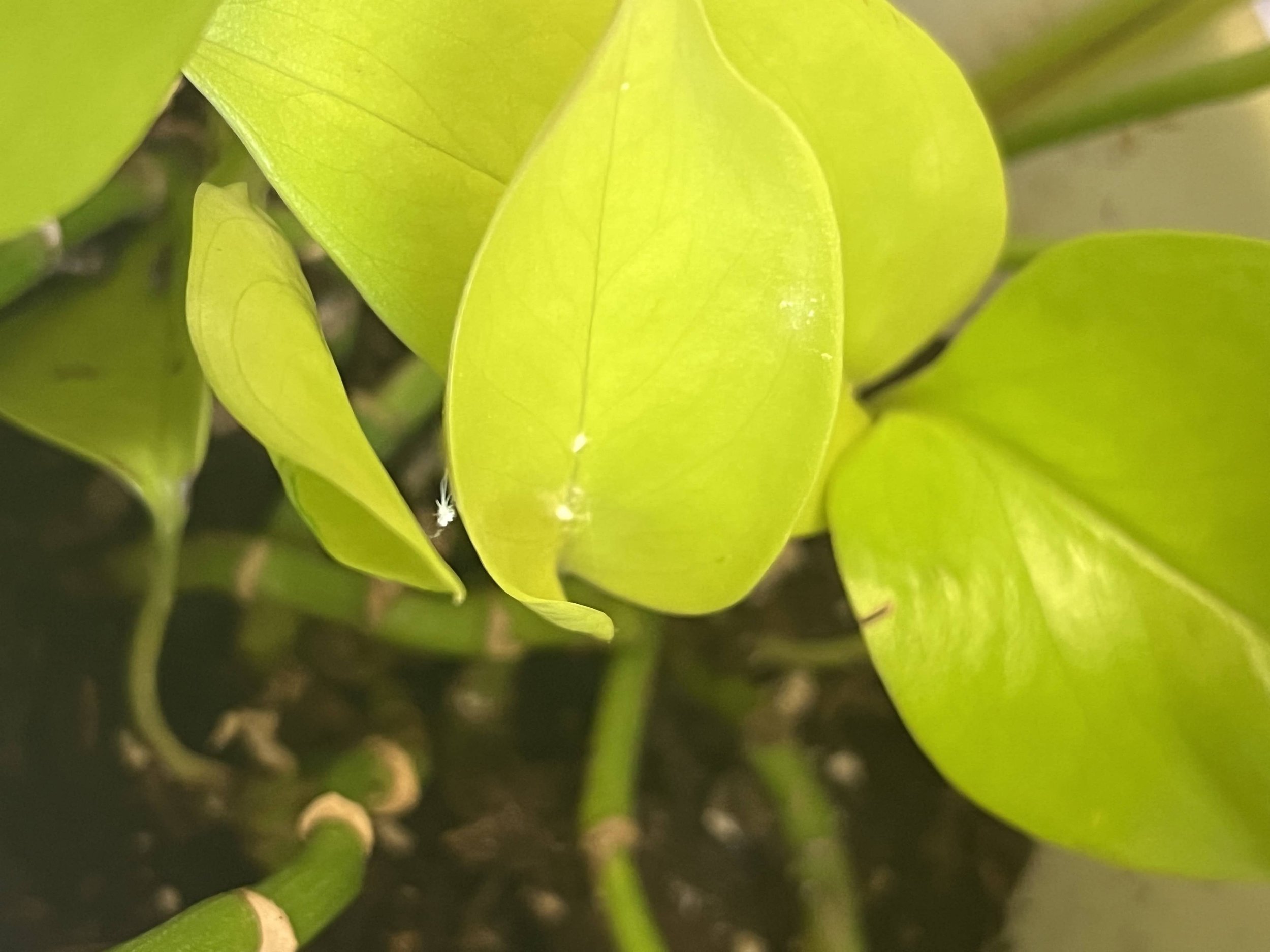Common Signs of Pest Infestations on Houseplants: Spot Them Before They Take Over!
Mealybugs feasting on a neon pothos.One of the most disheartening things for a plant lover is discovering that their cherished houseplants have become a breeding ground for pests. While these uninvited visitors are a common occurrence in the plant world, early detection is the key to managing and eradicating them. Today, let's delve into the tell-tale signs of the 7 most common pests, ensuring you can nip the problem in the bud (pun intended).
Spider mite webbing and visible damage.1. Spider Mites
Webbing: Fine, silky webs on the undersides of leaves or between stems.
Leaf Damage: Yellow speckles or stippling on the topside of leaves.
Visibility: Tiny red or brown mites (though they might be hard to spot with the naked eye).
Aphids destroying a leaf.
2. Aphids
Sticky Residue: A sugary substance called honeydew left on leaves, which can also lead to black sooty mold.
Clusters: Small, pear-shaped bugs congregating on new growth or leaf undersides. They can be green, black, red, or white.
Curling Leaves: New leaves might appear misshapen or curl inwards.
3. Mealybugs
White Cottony Masses: Resembling tiny tufts of cotton, especially in leaf axils, undersides of leaves, and crevices.
Honeydew Presence: Sticky substance leading to sooty mold.
Increased Ant Activity: Ants might be attracted to your plant due to the honeydew.
4. Scale Insects
Bumpy Spots: Hard or soft bumps on stems or leaf undersides, which are the pests themselves.
Honeydew Presence: Often leading to a black sooty mold.
5. Thrips
Silvery Streaks: Damage appears as silvery-white streaks or patches on leaves.
Tiny Insects: They are minute, thin, and can be black, brown, or yellow. Thrips might jump or fly away when disturbed.
Spots: Black specks of thrips feces might be visible on the leaf surface.
6. Whiteflies
White Moth-like Insects: Adult whiteflies fly around the plant when it's shaken or disturbed.
Yellowing: Leaves become pale, yellow, and may drop off.
Honeydew Presence: Leading to sooty mold growth.
7. Fungus Gnats
Swarm of Tiny Flies: Especially around the soil surface or under the plant saucer. Commonly mistaken for fruit flies.
Larvae: Tiny worm-like larvae might be visible on the soil's surface, which can damage plant roots.
Prevention & Early Intervention
It's worth noting that a well-cared-for plant is less susceptible to pest infestations. Proper watering, adequate lighting, and regular cleaning can deter pests.
However, should you spot them:
Isolate the Infested Plant: Keep at minimum a 2’ radius from any other plants in your home. This prevents the pests from spreading to other plants.
Use Natural Remedies: Insecticidal soaps, neem oil, or even a simple solution of soapy water can be effective against many pests.
Regular Check-ups: Regularly inspect plants, especially new ones, for signs of pests.
Conclusion
Plants, much like humans, can face their share of challenges. Pests, while annoying, are a natural part of the ecosystem. With vigilance and care, you can ensure that your indoor green haven remains a space of growth, beauty, and tranquility
Stay vigilant and keep those plants thriving!
Warmly,
Kristina Cocke
Owner of Plantiful, Houseplant Enthusiast








